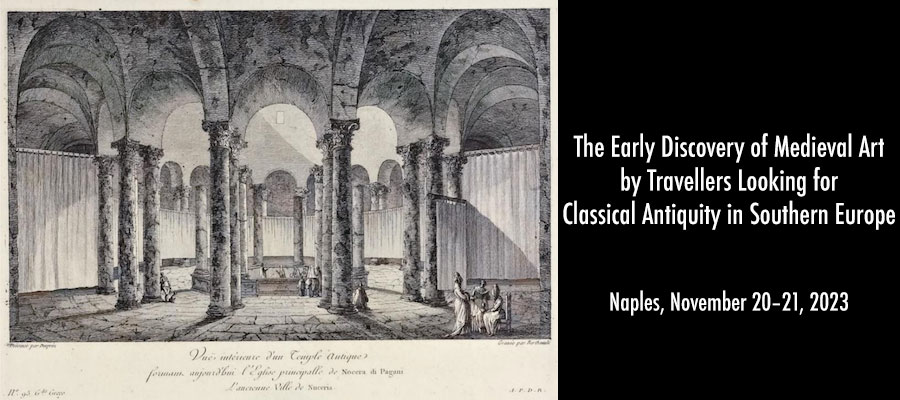The Early Discovery of Medieval Art by Travellers Looking for Classical Antiquity in Southern Europe, Naples, November 20–21, 2023
The conference is part of the international research project DIOMEDA – The Discovery of Medieval Art while Looking for Antiquities (P.I. Vinni Lucherini), sponsored by the University of Naples Federico II and the Compagnia di San Paolo within the STAR Plus program that supports advanced and competitive research at European level. The project is elaborated in cooperation with Sapienza Università di Roma and Bibliotheca Hertziana - Max-Planck Institute for Art History, Rome.
Between the 17th and early 19th centuries, travel played an essential role in the rediscovery of medieval art. Cultured men from all over Europe visited Mediterranean countries to see Greek and Roman monuments, but they were often confronted with artefacts and buildings from later centuries. How did they perceive medieval monuments that fell before their eyes while they were in search of classical antiquities? What terms did they use to describe them? What interpretative categories did they adopt to define them? What aesthetic or historical opinions they had on the Middle Ages in comparison with Antiquity, which was the main goal of their journey?
This conference wishes to examine the different attitudes towards medieval heritage in authors who were prepared to study Antiquity and verify their impact on the development of a new discipline specifically dedicated to the History of Medieval Art, as it appeared in Europe from 1820’s onward.
We invite papers with a multidisciplinary perspective from experts in history, art history, archaeology, linguistics, literature, anthropology, and any other disciplines dealing with the history of travel and art historiography, both on single case studies and more general overviews. Areas of interest may include:
- The perception of medieval art and architecture by European antiquarian travellers to Mediterranean countries from the 17th century to the early 19th century.
- The language adopted to describe medieval monuments, as well as the formulation of a specific vocabulary (definitions, lemmas, technicalities), especially when borrowed from other disciplines.
- The elaboration of interpretative categories to define medieval art and architecture, especially in comparison with that from Antiquity and the Renaissance.
- The visual sources on medieval monuments featuring in travel accounts and descriptions, historical treatises, and pamphlets, especially if analysed in relation with their textual counterpart.
- The social, ideological, aesthetic, and political framework that supported the historical interpretation of medieval art and architecture.
